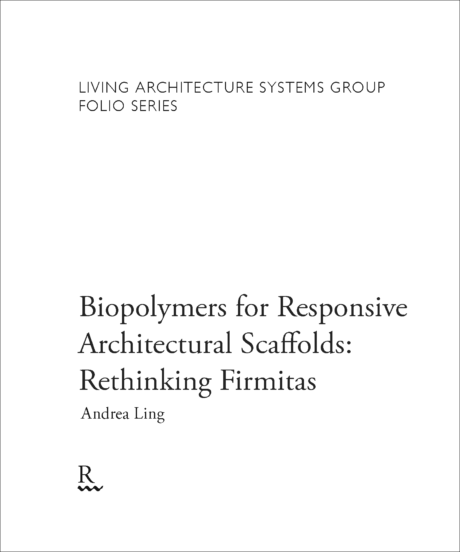Biopolymers for Responsive Architectural Scaffolds
Rethinking Firmitas
By Andrea Ling, edited by Philip Beesley
This folio presents the results of a series of chemical experiments for creating biopolymers that might be developed as architectural building materials. By working with biologically derived materials the experiments explore the possibility of an architecture based on a dynamic system of decay and renewal as a means to longevity rather than solidity and
durability of construction.
Organic materials such as casein, chitosan, cellulose and pectin decay more quickly than traditional construction materials, but what they lack in robustness and solidity, they make up for in resilience, flexibility and accommodation. Their fragile mutability presents an opportunity to rethink what can be made durable and what is maintained. Could we rethink the concept of firmitas not as a static condition of robustness, but as a dynamic state, based on many weak redundant members that are dependent on renewal for longevity? Can we support an alternative mode of design practice where the process of making things is not only consumptive but also provisional and that works in symbiosis with natural systems rather than trying to subjugate them?
The Living Architecture Systems Group (LASG) is an interdisciplinary partnership of academics, artists, designers and industry partners dedicated to researching and developing next-generation architectural environments. The LASG disseminates its work through exhibitions, publications and events. It is generously supported by the Social Sciences and Humanities Research Council of Canada (SSHRC), the University of Waterloo and many other partners and supporters.
The LASG Folio consists of work-in-progress reports and publications by LASG researchers and contributors.
Softcover, 17pp, 2019
978-1-988366-18-0
